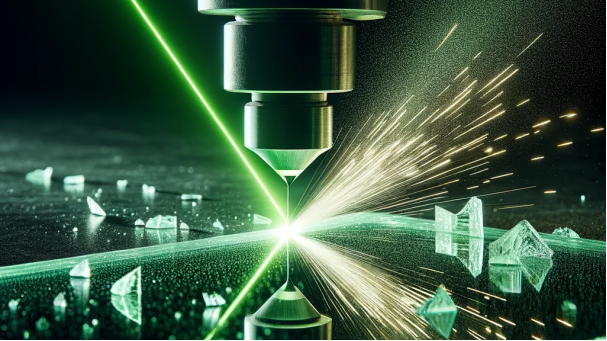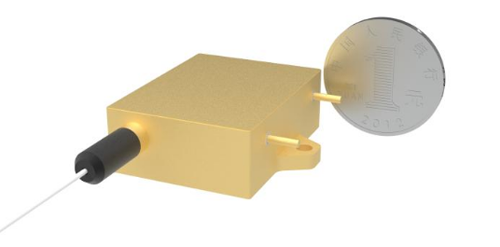Subscribe to Our Social Media For Prompt Post
Introduction to Laser Processing in Manufacturing
Laser processing technology has experienced rapid development and is widely used in various fields, such as aerospace, automotive, electronics, and more. It plays a significant role in improving product quality, labor productivity, and automation, while reducing pollution and material consumption (Gong, 2012).
Laser Processing in Metal and Non-metal Materials
The primary application of laser processing in the past decade has been in metal materials, including cutting, welding, and cladding. However, the field is expanding into non-metal materials like textiles, glass, plastics, polymers, and ceramics. Each of these materials opens up opportunities in various industries, although they already have established processing techniques (Yumoto et al., 2017).
Challenges and Innovations in Laser Processing of Glass
Glass, with its broad applications in industries like automotive, construction, and electronics, represents a significant area for laser processing. Traditional glass cutting methods, which involve hard alloy or diamond tools, are limited by low efficiency and rough edges. In contrast, laser cutting offers a more efficient and precise alternative. This is especially evident in industries like smartphone manufacturing, where laser cutting is used for camera lens covers and large display screens (Ding et al., 2019).
Laser Processing of High-Value Glass Types
Different types of glass, such as optical glass, quartz glass, and sapphire glass, present unique challenges due to their brittle nature. However, advanced laser techniques like femtosecond laser etching have enabled precision processing of these materials (Sun & Flores, 2010).
Influence of Wavelength on Laser Technological Processes
The wavelength of the laser significantly influences the process, especially for materials like structural steel. Lasers emitting in ultraviolet, visible, near and distant infrared areas have been analyzed for their critical power density for melting and evaporation (Lazov, Angelov, & Teirumnieks, 2019).
Diverse Applications Based on Wavelengths
The choice of laser wavelength is not arbitrary but is highly dependent on the material's properties and the desired outcome. For example, UV lasers (with shorter wavelengths) are excellent for precision engraving and micromachining, as they can produce finer details. This makes them ideal for the semiconductor and microelectronics industries. In contrast, infrared lasers are more efficient for thicker material processing due to their deeper penetration capabilities, making them suitable for heavy industrial applications. (Majumdar & Manna, 2013).Similarly, green lasers, typically operating at a wavelength of 532 nm, find their niche in applications requiring high precision with minimal thermal impact. They are particularly effective in microelectronics for tasks like circuit patterning, in medical applications for procedures like photocoagulation, and in the renewable energy sector for solar cell fabrication. Green lasers' unique wavelength also makes them suitable for marking and engraving diverse materials, including plastics and metals, where high contrast and minimal surface damage are desired. This adaptability of green lasers underscores the importance of wavelength selection in laser technology, ensuring optimal outcomes for specific materials and applications.
The 525nm green laser is a specific type of laser technology characterized by its distinct green light emission at the wavelength of 525 nanometers. Green lasers at this wavelength find applications in retinal photocoagulation, where their high power and precision are beneficial. They are also potentially useful in material processing, particularly in fields that require precise and minimal thermal impact processing.The development of green laser diodes on c-plane GaN substrate towards longer wavelengths at 524–532 nm marks a significant advancement in laser technology. This development is crucial for applications requiring specific wavelength characteristics
Continuous Wave and Modelocked Laser Sources
Continuous wave (CW) and modelocked quasi-CW laser sources at various wavelengths like near-infrared (NIR) at 1064 nm, green at 532 nm, and ultraviolet (UV) at 355 nm are considered for laser doping selective emitter solar cells. Different wavelengths have implications for manufacturing adaptability and efficiency (Patel et al., 2011).
Excimer Lasers for Wide Band Gap Materials
Excimer lasers, operating at a UV wavelength, are suitable for processing wide-bandgap materials like glass and carbon fiber-reinforced polymer (CFRP), offering high precision and minimal thermal impact (Kobayashi et al., 2017).
Nd:YAG Lasers for Industrial Applications
Nd:YAG lasers, with their adaptability in terms of wavelength tuning, are used in a wide range of applications. Their ability to operate at both 1064 nm and 532 nm allows for flexibility in processing different materials. For instance, the 1064 nm wavelength is ideal for deep engraving on metals, while the 532 nm wavelength provides high-quality surface engraving on plastics and coated metals.(Moon et al., 1999).
→Related Products: CW Diode-pumped solid-state laser with 1064nm wavelength
High Power Fibre Laser Welding
Lasers with wavelengths close to 1000 nm, possessing good beam quality and high power, are used in keyhole laser welding for metals. These lasers efficiently vaporize and melt materials, producing high-quality welds (Salminen, Piili, & Purtonen, 2010).
Integration of Laser Processing with Other Technologies
The integration of laser processing with other manufacturing technologies, such as cladding and milling, has led to more efficient and versatile production systems. This integration is particularly beneficial in industries such as tool and die manufacturing and engine repair (Nowotny et al., 2010).
Laser Processing in Emerging Fields
The application of laser technology extends to emerging fields like semiconductor, display, and thin film industries, offering new capabilities and improving material properties, product precision, and device performance (Hwang et al., 2022).
Future Trends in Laser Processing
Future developments in laser processing technology are focused on novel fabrication techniques, improving product qualities, engineering integrated multi-material components and enhancing economic and procedural benefits. This includes laser rapid manufacturing of structures with controlled porosity, hybrid welding, and laser profile cutting of metal sheets (Kukreja et al., 2013).
Laser processing technology, with its diverse applications and continuous innovations, is shaping the future of manufacturing and material processing. Its versatility and precision make it an indispensable tool in various industries, pushing the boundaries of traditional manufacturing methods.
Lazov, L., Angelov, N., & Teirumnieks, E. (2019). METHOD FOR PRELIMINARY ESTIMATION OF THE CRITICAL POWER DENSITY IN LASER TECHNOLOGICAL PROCESSES. ENVIRONMENT. TECHNOLOGIES. RESOURCES. Proceedings of the International Scientific and Practical Conference. Link
Patel, R., Wenham, S., Tjahjono, B., Hallam, B., Sugianto, A., & Bovatsek, J. (2011). High-Speed Fabrication of Laser Doping Selective Emitter Solar Cells Using 532nm Continuous Wave (CW) and Modelocked Quasi-CW Laser Sources. Link
Kobayashi, M., Kakizaki, K., Oizumi, H., Mimura, T., Fujimoto, J., & Mizoguchi, H. (2017). DUV high power lasers processing for glass and CFRP. Link
Moon, H., Yi, J., Rhee, Y., Cha, B., Lee, J., & Kim, K.-S. (1999). Efficient intracavity frequency doubling from a diffusive reflector-type diode side-pumped Nd:YAG laser using a KTP crystal. Link
Salminen, A., Piili, H., & Purtonen, T. (2010). The characteristics of high power fibre laser welding. Proceedings of the Institution of Mechanical Engineers, Part C: Journal of Mechanical Engineering Science, 224, 1019-1029. Link
Majumdar, J., & Manna, I. (2013). Introduction to Laser Assisted Fabrication of Materials. Link
Gong, S. (2012). Investigations and applications of advanced laser processing technology. Link
Yumoto, J., Torizuka, K., & Kuroda, R. (2017). Development of a Laser-Manufacturing Test Bed and Database for Laser-Material Processing. The Review of Laser Engineering, 45, 565-570. Link
Ding, Y., Xue, Y., Pang, J., Yang, L.-j., & Hong, M. (2019). Advances in in-situ monitoring technology for laser processing. SCIENTIA SINICA Physica, Mechanica & Astronomica. Link
Sun, H., & Flores, K. (2010). Microstructural Analysis of a Laser-Processed Zr-Based Bulk Metallic Glass. Metallurgical and Materials Transactions A. Link
Nowotny, S., Muenster, R., Scharek, S., & Beyer, E. (2010). Integrated laser cell for combined laser cladding and milling. Assembly Automation, 30(1), 36-38. Link
Kukreja, L. M., Kaul, R., Paul, C., Ganesh, P., & Rao, B. T. (2013). Emerging Laser Materials Processing Techniques for Future Industrial Applications. Link
Hwang, E., Choi, J., & Hong, S. (2022). Emerging laser-assisted vacuum processes for ultra-precision, high-yield manufacturing. Nanoscale. Link
Post time: Jan-18-2024


